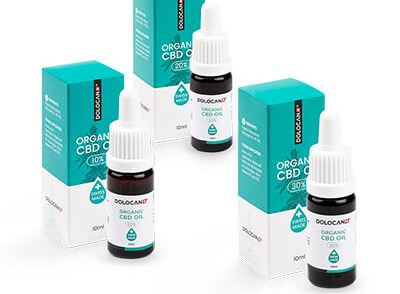What are the benefits of CBD oil?
The cannabidiol molecule was identified and isolated in the early 1960s. Numerous scientific studies have since uncovered certain characteristics of this cannabis molecule.
Studies have been conducted on CBD, they are only statistical studies and do not have the value of clinical studies conducted on patients. The benefits attributed to CBD are based on these statistical observations. CBD is known to have several benefits.
No psychotic effect
First of all, its lack of psychoactivity allows it to be used in a patient without any risk of impairment of function. It should be remembered that the WHO – the UN body that issues health recommendations – does not classify CBD as a drug.
Physiological actions
CBD has analgesic properties: cannabidiol reduces the transmission of pain to the brain. CBD intake could reduce inflammatory activity due to chronic pain.
Studies have shown the positive effects of CBD on anxiety. If it is able to reduce stress and anxiety, CBD would be an important ally in the treatment of a wide range of mental illnesses. Or simply a way to improve personal well-being.
Studies are currently being conducted to validate the action of CBD as a neuroprotective agent. CBD is said to protect brain and central nervous system cells from damage. This feature would be of particular interest in the treatment of degenerative diseases such as Parkinson’s disease.
Inhibition of cancer cell proliferation
Scientific analysis has shown that CBD is capable of producing oxidative stress which causes the death of certain types of cancer cells. Oxidative stress has been highlighted as a possible factor in the development of a number of progressive diseases including Alzheimer’s disease, Parkinson’s disease and cancer.
What is CBD?
Cannabidiol, better known by its abbreviated name CBD, is a molecule extracted from cannabis. The hemp plant contains dozens of cannabinoid compounds, the best known of which are CBD and THC (tetrahydrocannabinol). CBD is a chemical compound present in cannabis in the same way as THC, but in greater quantities than the latter.
Extracted from cannabis plants, cannabidiol comes in an oily form, which is then easily incorporated into a liquid solution. CBD can then be consumed as an essential oil or vaping liquid for electronic cigarettes. As a result of fashion, the name CBD can also be found on the packaging of many products, particularly cosmetics. This marketing use of CBD terminology only indicates that a certain amount of CBD, often small, is contained in the finished product.
Unlike THC, CBD has no psychoactive effect on the body. Moreover, it does not cause addiction. It cannot therefore be described as a drug. It is for these reasons that its use within a legal framework and under certain conditions is allowed.
The democratisation of its use in Europe benefits from a certain legal vagueness which makes it considered as “legal cannabis”. Its therapeutic benefits have been studied for several decades and recognised in a number of medical fields, hence its other nickname of “therapeutic cannabis”.
CBD is marketed as crystals, flowers or pollen in their most natural configuration. In the form of a processed product, there are e-liquids and essential oils or solid capsules. The cosmetics industry will use CBD extracts whose quantity and quality will be difficult to control.
source Image: CBD molecule type Cannabinoid
What are the side effects of CBD?
Unlike the other known molecule (THC) in cannabis, CBD has no psychotropic effect and is not addictive. This was confirmed in 2017 by the WHO (World Health Organisation), a UN body, which does not classify CBD as a narcotic substance. It is for these reasons that he is positively viewed as being able to enter a therapeutic process.
CBD can have drug interactions with a wide range of medications, from anti-cancer drugs to Voltaren. In particular, CBD can change the way the liver breaks down certain drugs. Before taking CBD, it is therefore advisable to check with your doctor that the action of CBD is compatible with these treatments.
Taking CBD at the same time as a therapeutic treatment involving a drug whose effect is altered by the liver can potentially increase the effects of that drug as well as its side effects. The usual response is to reduce the dosage of the drug treatment.
CBD also has some side effects of its own. These side effects have been noted in some cases, but are not inevitable. CBD can cause diarrhoea, appetite problems and a feeling of tiredness or even drowsiness.
Is CBD legal in France?
Known as “legal cannabis” in France, CBD benefits from a legal vacuum in the interpretation of texts on the consumption of cannabis products. French and European law consider a THC concentration of less than 0.2% to be legal without specifying whether this barrier applies to the cultivated plant or the finished product.
For its part, the Mildeca (Interministerial Mission for the Fight against Drugs and Addictive Behaviour), whose opinion issued in July 2018 is only advisory, specifies that the products must not contain any trace of THC. As for the ANSM (Agence Nationale de Sécurité du Médicament), it makes no distinction between the different cannabis molecules and classifies them all as narcotics.
As far as marketing is concerned, presenting CBD as a therapeutic product or remedy is prohibited by law in France. Indeed, only doctors and pharmacists are allowed to prescribe and market therapeutic products.
Nevertheless, the democratisation of CBD has taken place in Europe, benefiting from this regulatory uncertainty. This vagueness is also maintained by practices that differ from country to country, making it difficult to trace finished products. The main stumbling block is the level of THC, whose maximum authorised threshold is different at European level: 0.2% in France and Germany, 0.6% in Italy, 1% in Switzerland.
Does CBD reduce pain?
Chronic pain is severe pain in a specific area of the body. It can be so severe as to constitute a handicap by limiting the physical mobility of the person. Statistical studies have shown that CBD use can reduce the signs of pain in people previously suffering from chronic pain.
Like all mammals, the human body has an endocannabinoid system. This system – let’s call it the SEC – is composed of receptors spread throughout the body. SEC is useful in the regulation of the immune response and in the transmission of pain. Without knowing the exact reasons, CBD is suspected of acting on SEC receptors in order to manipulate the signal used by the human body for pain perception. This paradox was reflected in a report by Addiction Switzerland (a private and independent foundation), in the following terms: “a positive doubt concerning the analgesic effects of CBD to reduce pain”.
Chronic pain
Statistical studies on the subject show that the use of CBD as a treatment for the effects of chronic pain produces significant results. The evidence from the studies suggests that CBD use can reduce inflammation and pain. Moreover, as there is no addiction to CBD, there is no need to increase the doses or to ask the question of withdrawal.
Migraine
“A joint to cure your migraine” This is more or less what a team of Italian researchers proposed at the last congress of the European Academy of Neurology in June 2019. And the THC-CBD combination gives very exciting results.
Pain caused by arthritis
The most frequently cited study on the subject was conducted on rats suffering from arthritis, in which swelling and joint inflammation were alleviated and the progression of joint destruction was reduced.
However, there are no human studies on the subject. The fact remains that the presumption is favourable.
In what form can cbd be consumed?
CBD is a molecule derived from cannabis. It can be consumed either as a natural product (flower, pollen, crystals) or as an industrialised product of extraction. The extraction of CBD from the cannabis leaf produces an oil which is then incorporated into a finished product marketed as a bottle of oil or an e-liquid. Cosmetics, on the other hand, use oil from the cold pressing of hemp seeds.
From these products, there are different ways to consume them.
Eating CBD
Whether in cooked form (crystals, oil, seeds) or uncooked form (pills, oil), it is possible to consume CBD by eating it. For the cooked way, it is possible to integrate CBD oil or crystals into any type of food. But it is also possible to eat hemp seeds as part of a meal, like absolutely any other type of seed that a vegetarian would use. The most hype being CBD tea, to be taken at 5pm with a cookie.
Smoking CBD
The flowers can be added to tobacco to make cigarettes which are then smoked like any other cigarette. You can also put some CBD crystals in rolling tobacco and smoke in the same way.
Vaping CBD
CBD is also available as an e-liquid, ready to use for vaping.
Taking care of your skin with CBD
The cold pressing of hemp seeds produces an oil containing CBD which is used in the cosmetic industry. In addition to the properties due to the particularities of the hemp seed (hydration), CBD would bring a plus in terms of skin regeneration, especially in cases of burns.
What is the purpose of the Endocannabinoid system?
The endo-cannabinoid system (ECS) is a system that was inadvertently discovered in the 1980s when researchers were investigating the harmful effects of cannabis to discredit its use. The ECS is a system that works with receptors (CB1 and CB2) for which cannabinoids are the chemical messengers. The system usually works with endogenous cannabinoids.
However, the cannabis study that led to the discovery of SEC showed that it was able to work with exogenous cannabinoids (phyto-cannabinoids, cannabinoids from plants), with a more effective and longer lasting response. So while endocannabinoids are produced only on demand and are destroyed immediately after use, exogenous cannabinoids have a much longer life span.
Thus the THC in cannabis binds to the CB1 receptors in the ECS and activates them in the same way as an endogenous cannabinoid. The effect of THC thus goes beyond the simple “high” commonly considered to be purely psychological and acts in the transmission of a number of information from the SEC.
CBD does not bind to the receptors, but blocks the THC-CB1 bond in order to limit the action of THC on the SEC. CBD has little influence on the CB2 receptor, but is an important factor in stimulating the body’s production of endocannabinoids.
The ESA is a system that acts by modulating a number of processes, including
• anxiety,
• the transmission of pain,
• the immune response,
• metabolism etc.
Keeping these different processes in balance is called homeostasis. Homeostasis is a state of healthy balance of all processes in a body. And the SEC is the guarantor of this constant state of good functioning.
As knowledge of the endocannabinoid system is relatively recent, there are many elements or effects that are still poorly or not at all known.
What are the benefits of hemp?
Due to a lack of awareness, hemp is often associated with cannabis alone in the popular imagination. Hemp, at least its seeds and the oil extracted from them, are excellent nutrients. The psychotropic substance of cannabis is mainly found in the leaves of the plant. Hemp seed is free of psychoactive substances.
On the other hand, hemp seed is rich in unsaturated fatty acids (30%, including omega 3 and omega 6), which are essential for the body. This contribution is appreciated for its cholesterol regulating action and for its preventive action in the fight against cardiovascular diseases.
Hemp seed is popular with vegetarians because it has a high protein content (25%, second only to soya). In addition, like quinoa, it provides the essential amino acids required for our diet. The protein it provides is also better digested than that from other plant sources. A complementary food for vegetarians looking for something new.
Hemp seed is also rich in soluble and insoluble fibre. Insoluble fibres are interesting for the regulation of intestinal transit. Soluble fibre helps to manage blood sugar levels, making it a good preventive measure against type 2 diabetes.
The nutritional value of hemp seeds has led the food industry to take an interest in them, so that today you can find various hemp seed products on the market, such as cereal bars, cheese substitutes, butter, herbal teas and coffee.
The other component of hemp is the oil extracted from the hemp seed. Best known for its use in the cosmetic industry, hemp oil is appreciated for its moisturising, nourishing and regenerating properties. It is a perfect remedy for skin burns, whether it be to soothe razor burn or the effects of sunburn. Some oncology units use it to soothe the skin under the effects of radiotherapy.
What are the uses of CBD in cosmetics?
In cosmetics, hemp seed oil is used. Unlike CBD oil, which is extracted from hemp leaves, the oil used in cosmetics is extracted from hemp seeds by cold pressing. Consumer products derived from hemp seed oil cover a wide range of health and wellness products. These range from moisturizers, massage oils, foundations, scrubs and even toothpastes.
CBD oil used in cosmetics is appreciated for its soothing properties and its high content of omega 3 and omega 6 (richer than argan oil). Like shea butter, CBD oil is rich in essential fatty acids, which are useful for good skin hydration.
But it is the specific characteristics of CBD that make CBD oil-based cosmetics stand out from others. The dermis is part of the endocannabinoid system. As such, it has many CB2 receptors that can be activated by CBD. The topical application of a CBD-based cosmetic can thus act as a therapeutic treatment, promoting a local response to skin inflammation.
Oddly enough, the packaging of cosmetic ranges using hemp seed oil show a hemp leaf, even though it is not used in their manufacture. In men’s cosmetics, the emphasis on the cannabis leaf is even more exaggerated, riding the “bad boy” wave. Another oddity is that while the existence of the endocannabinoid system has only been known since the 1990s, The Body Shop chain has been offering a range of hemp cosmetics since 1992.
Does CBD have anti-inflammatory qualities?
History tells us that the applications of cannabis for pain relief were known to Chinese medicine millennia ago. Rediscovered in the 1990s with the discovery of the endocannabinoid system, the properties of CBD to act against pain and initiate an anti-inflammatory response are still being studied by scientists.
However, we can already see that CBD is now a recognised answer in the treatment of pain and inflammation. For example, CBD has been removed from the list of doping substances by the World Anti-Doping Agency, freeing up its therapeutic use for top athletes. While repeated use of non-steroidal anti-inflammatory drugs can cause significant side effects (gastrointestinal effects such as ulcers or heartburn), CBD’s effectiveness as an anti-inflammatory is scientifically confirmed and safe.
The action of CBD on the endocannabinoid system to regulate pain perception has now been shown to be both effective and safe. The processes take a long time to analyse and depend on the different cases, but the overall feeling of the researchers regarding the use of CBD for anti-inflammatory purposes is rather optimistic. The studies reporting the most successful results in the treatment of pain have been in patients with cancer or arthritis.
Today, CBD-based products are numerous. The person suffering from chronic pain will be able to relieve it by using one or more of these products. Whether applied topically with a cream for a quick effect, or in capsules for a more prolonged effect, CBD will be an effective aid in the treatment of pain.




